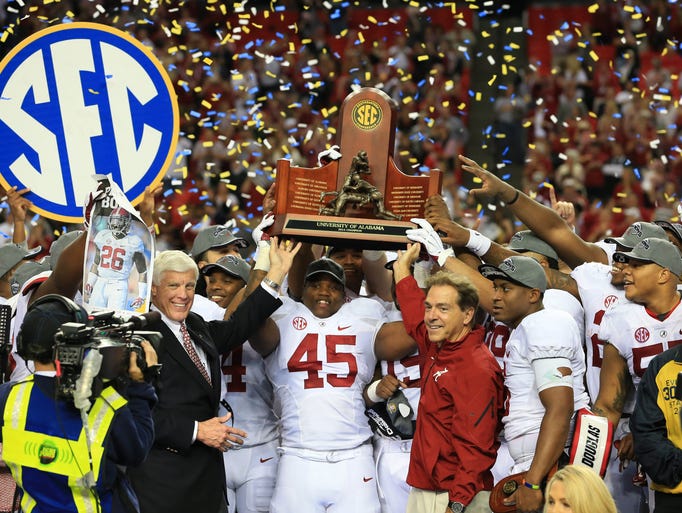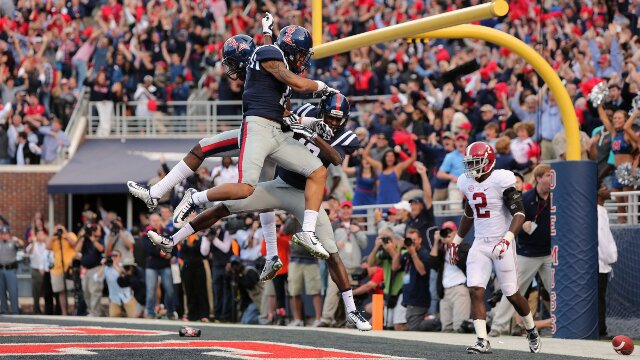Okay, I wanted to tell a dramatic third-person story about myself. Sue me. Either way, the book co-written by Wetzel, Peter and Passan left a mark. They never left instruction as to how the teams in the field would be selected and seeded, so I took that responsibility upon myself. Overall, I think I'm happy with how the process took shape this year.
I've spent the last 15 weeks looking at schedules, then looking at results, inputting data into a Google doc, then consulting some computer rankings in an effort to not be totally biased on my own rankings. For the past nine, I've been making some mock brackets. Several teams have fallen from those mocks over the past couple months. If you want to refer back to the entire season's worth of data, you can find it all on the COAS Tournaments page. It also contains posts and brackets from the last two years of playoffs for historical purposes.
So this time, I put everything together for real. The system for it remains the same, however. Sixteen teams make the field: all ten conference champions, plus six at-large teams. These teams are then seeded with the help of a lot of data. The following metrics are all considered, and will be included with the playoff teams:
- Non-Conference Schedule Strength (NCSS): A metric that determines how strong each team's non-conference slate was. Teams are rewarded for playing Power conference foes and/or playing on the road, while being penalized for playing down a division.
- First Degree/Second Degree Playoff Points (PP1/PP2): A metric that determines how good each team really is. Win totals of defeated teams are added together to determine First Degree Playoff Points, and the average PP1 of each team's vanquished foes is calculated to determine Second Degree Playoff Points.
- David Rothman Computer Rankings (ROTH): The late David Rothman created a computer ranking during the BCS days, but wasn't allowed to use it because of the fact that margin of victory was a part of his formula. He made his formula public domain, and a staff member at UCLA calculates the rankings weekly.
- Jeff Sagarin Computer Rankings (SAG): Jeff Sagarin had a computer formula in use for the BCS, but had to change the formula he submitted to take out margin of victory. He still calculated that, however, and released that with his BCS rankings. The margin of victory-included rankings are used here.
So, enough talk. It's time to unveil the 2014 Death to the BCS Playoff Field.
- Alabama (12-1, SEC Champion): NCSS- 3, PP1- 64, PP2- 29.5, ROTH- 1, SAG- 1 (LW: 1)
- Florida State (13-0, ACC Champion): NCSS- 4, PP1- 68, PP2- 25.7, ROTH- 7, SAG- 15 (LW: 2)
- Oregon (12-1, Pac 12 Champion): NCSS- 2, PP1- 61, PP2- 26.5, ROTH- 3, SAG- 3 (LW: 4)
- Ohio State (12-1, Big Ten Champion): NCSS- 6, PP1- 70, PP2- 30.5, ROTH- 12, SAG- 5 (LW: 3)
- Baylor (11-1, Big 12 Champion): NCSS- 2, PP1- 55, PP2- 20.9, ROTH- 5, SAG- 7 (LW: 6)
- TCU (11-1, At Large): NCSS- 3, PP1- 54, PP2- 21.5, ROTH- 2, SAG- 2 (LW: 7)
- Boise State (11-2, Mountain West Champion): NCSS- 6, PP1- 65, PP2- 25.6, ROTH- 31, SAG- 33 (LW: 8)
- Georgia Tech (10-3, At Large): NCSS- 5, PP1- 60, PP2- 28.8, ROTH- 21, SAG- 18 (LW- 9)
- Arizona (10-3, At Large): NCSS- 4, PP1- 59, PP2- 25.6, ROTH- 14, SAG- 30 (LW- 10)
- Missouri (10-3, At Large): NCSS- 4, PP1- 56, PP2- 25.7, ROTH- 16, SAG- 16 (LW: NR)
- Ole Miss (9-3, At Large): NCSS- 2, PP1- 64, PP2- 35.0, ROTH- 6, SAG- 4 (LW- 11)
- UCLA (9-3, At Large): NCSS- 6, PP1- 62, PP2- 31.2, ROTH- 17, SAG- 17 (LW: 12)
- Marshall (12-1, Conference USA Champion): NCSS- 4, PP1- 48, PP2- 15.5, ROTH- 42, SAG- 32 (LW: 13)
- Northern Illinois (11-2, MAC Champion): NCSS- 7, PP1- 40, PP2- 15.1, ROTH- 71, SAG- 69 (LW: 15)
- Memphis (9-3, American Athletic Champion): NCSS- 6, PP1- 33, PP2- 12.6, ROTH- 49, SAG- 44 (LW: 14)
- Georgia Southern (9-3, Sun Belt Champion): NCSS- 7, PP1- 31, PP2- 8.7, ROTH- 75, SAG- 67 (LW: 16)
 |
| Photo by Rogelio V. Solis (AP) |
 |
| Photo by Kevin Liles (USA TODAY Sports) |
 |
| Photo by Jerry Larson (Waco Herald Tribune/AP) |
 |
| Photo from Getty Images (Photographer uncredited) |
 |
| Photo by Chris Tilley (AP) |
Overall, my top four is in a slightly different order from what the Selection Committee decided, but the semifinal matchups would be the same. The field as a whole was decided on Sunday in advance of what the committee did. Ultimately, the committee's decision proves that the sixteen-team field is for the best. We don't have this Baylor-TCU argument because they're both in. The only real controversy was that three-way-tie in the American Athletic conference. In terms of at large teams, Mississippi State probably has the biggest gripe of not being in, but they didn't beat enough quality teams. Other than them, Michigan State and Colorado State are the only other two loss teams that got bumped from the field. Of these, Michigan State might have had the best argument, though it's close between them and Mississippi State.
So with the field set, you can view the official 2014 Death to the BCS Playoffs Bracket here. Dates, times, and sites are set to go. On the day of the game, I'll grab weather conditions from those locales and record them so I can have an accurate simulation to work with. Check back in a couple weeks for the first round results!

No comments:
Post a Comment